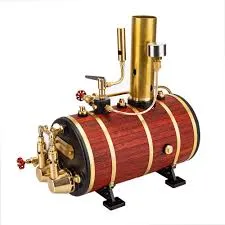
Sep . 14, 2024 16:24 Back to list
how to adjust water level in steam boiler
How to Adjust Water Level in a Steam Boiler
Adjusting the water level in a steam boiler is a crucial aspect of boiler operation and maintenance. Proper water level management ensures optimal performance, safety, and longevity of the boiler. In this article, we will discuss the steps and considerations involved in adjusting the water level in a steam boiler.
Understanding the Importance of Water Level
The water level in a steam boiler directly affects its efficiency and safety. If the water level is too low, it can lead to overheating and damage to the boiler’s components. Conversely, a water level that is too high can result in water carryover into the steam lines, leading to wet steam, reduced efficiency, and potential damage to the steam system. Therefore, maintaining the appropriate water level is essential for the boiler's proper functioning.
Checking the Water Level
Before adjusting the water level, it is essential to check the existing level using the boiler’s sight glass. The sight glass provides a visual indication of the water level inside the boiler and should be regularly monitored. The ideal water level generally falls within the range specified in the manufacturer's guidelines. It is essential to ensure that the sight glass is clean and free from obstructions for accurate readings.
Adjusting the Water Level
1. Identify the Problem If the water level is outside the recommended range, identify the cause. Common issues that can lead to incorrect water levels include low feedwater supply, faulty water level controls, or leaks within the system.
how to adjust water level in steam boiler

2. Add Water To raise the water level, you can add water manually or adjust the feedwater system. Ensure that the feedwater temperature is appropriately managed to avoid thermal shock to the boiler. A sudden influx of cold water can result in stress and potential damage to boiler components.
3. Drain Excess Water If the water level is too high, you may need to drain excess water from the boiler. Use the blowdown valve or a drain valve for this purpose. It is important to perform this task slowly to avoid sudden fluctuations in water temperature and pressure.
Automatic Level Control Systems
Many modern steam boilers are equipped with automatic water level control systems. These systems use sensors and control valves to maintain the desired water level automatically. If your boiler has such a system, ensure that it is functioning correctly and that the sensors are clean and calibrated. Regular maintenance of these systems can prevent unexpected outages and maintain operational efficiency.
Regular Maintenance and Monitoring
Regular maintenance of the steam boiler and its water level control systems is paramount. Schedule routine inspections, clean the sight glass, and check for any signs of leaks or malfunctions. Additionally, operators should be trained to recognize the signs of incorrect water levels and how to respond accordingly.
Conclusion
Maintaining the proper water level in a steam boiler is essential for safe and efficient operations. By checking the water level regularly, making necessary adjustments, and ensuring the proper functioning of automatic control systems, operators can enhance the performance and reliability of their boilers. Proper training and adherence to manufacturer guidelines will further ensure safe and efficient boiler operation, protecting both personnel and equipment.
-
High-Efficiency Commercial Oil Fired Steam Boiler for Industry
NewsJul.30,2025
-
High-Efficiency Biomass Fired Thermal Oil Boiler Solutions
NewsJul.30,2025
-
High Efficiency Gas Fired Thermal Oil Boiler for Industrial Heating
NewsJul.29,2025
-
High-Efficiency Gas Fired Hot Water Boiler for Sale – Reliable & Affordable
NewsJul.29,2025
-
High Efficiency Biomass Fired Hot Water Boiler for Industrial and Commercial Use
NewsJul.29,2025
-
High-Efficiency Biomass Fired Hot Water Boiler for Industrial Use
NewsJul.28,2025
Related PRODUCTS






















